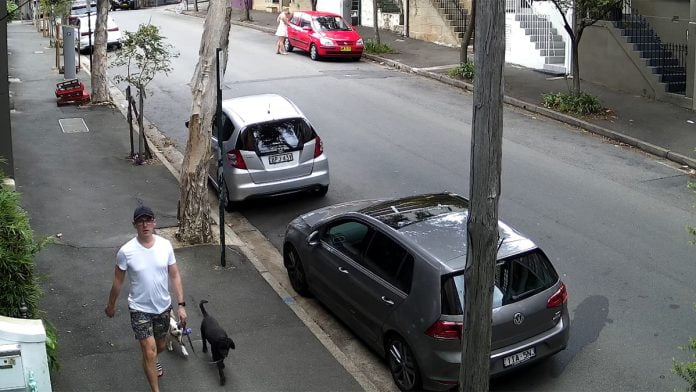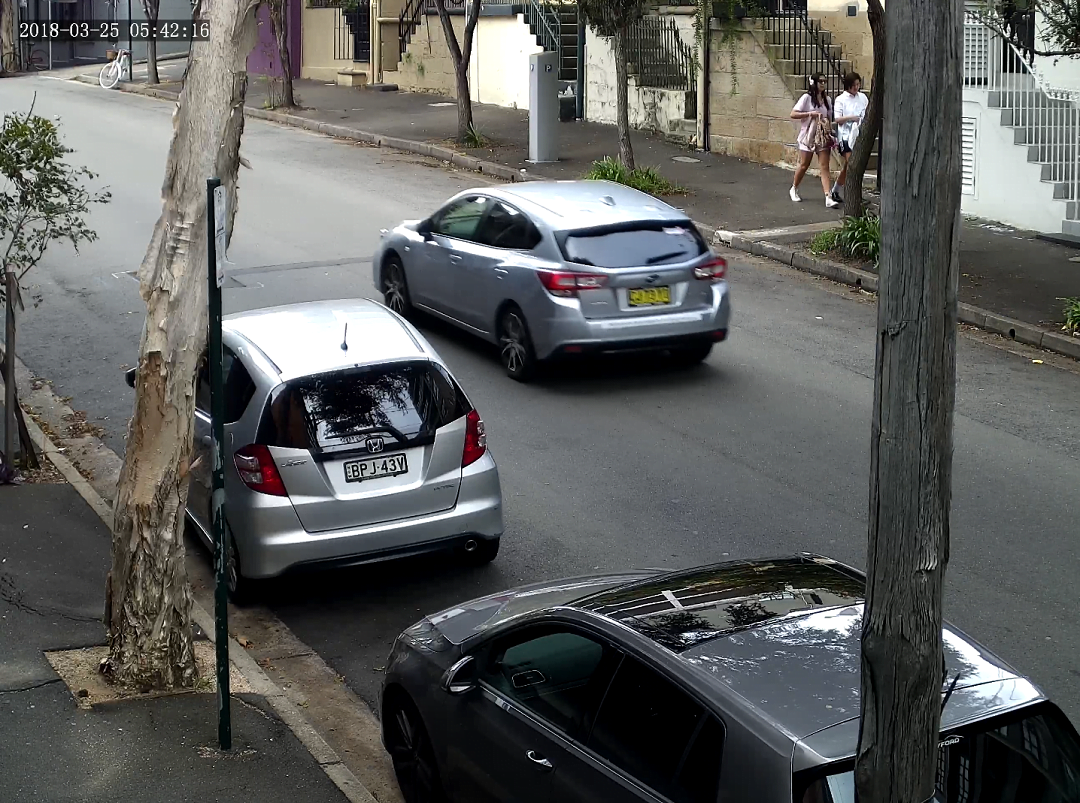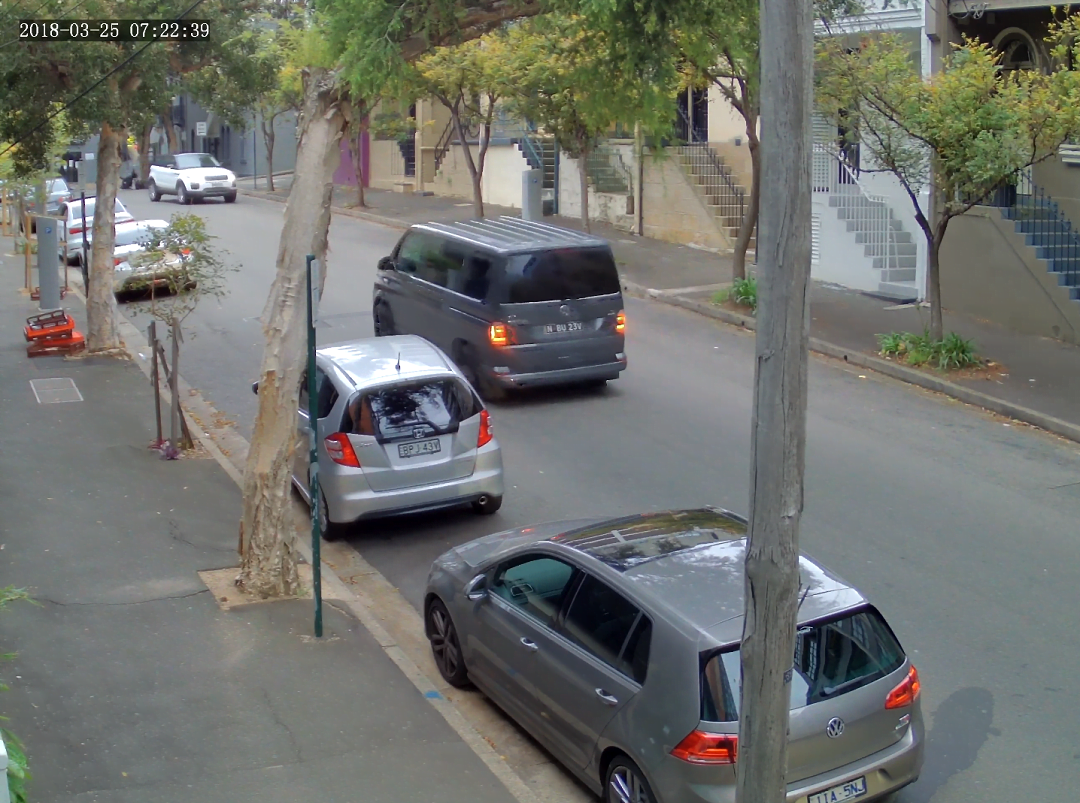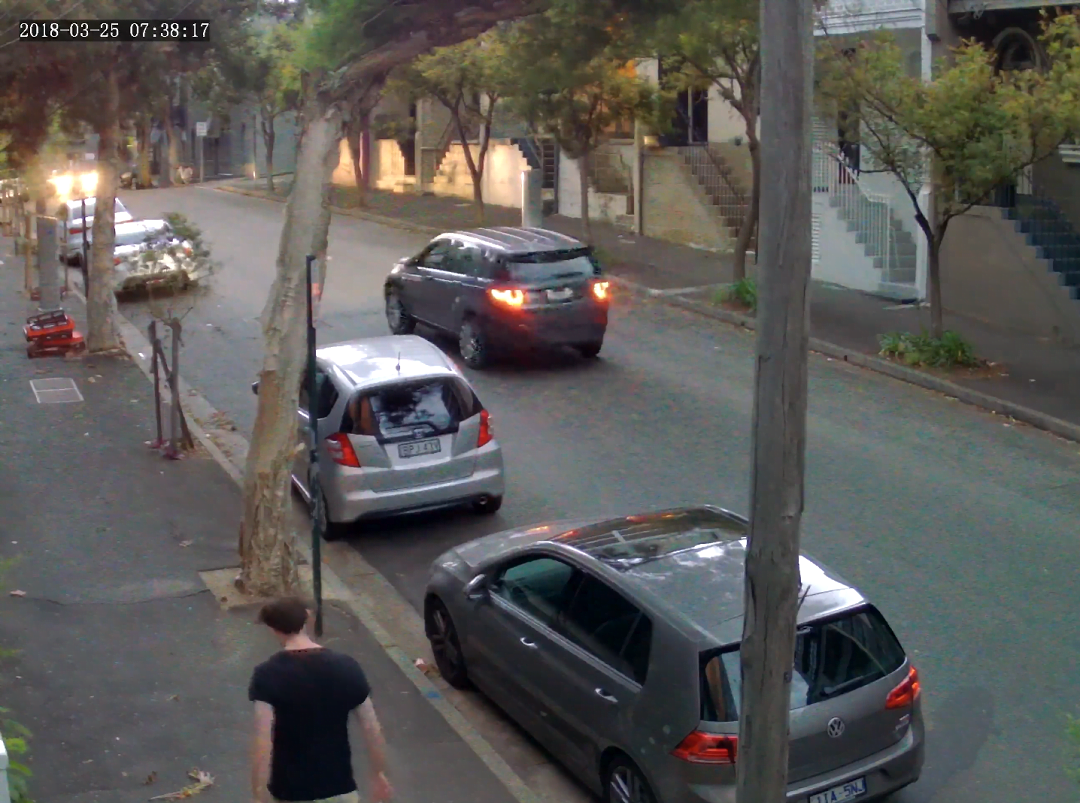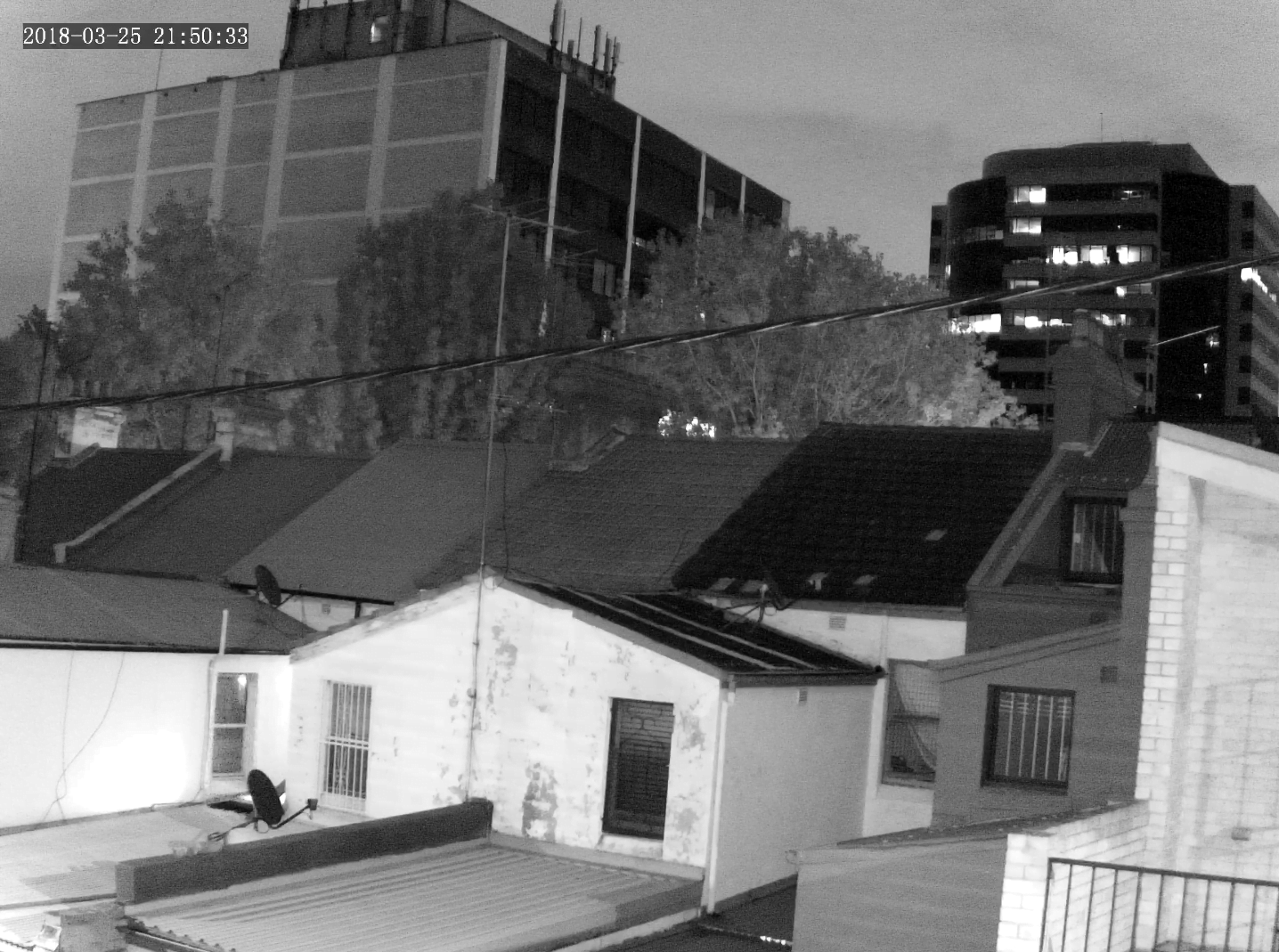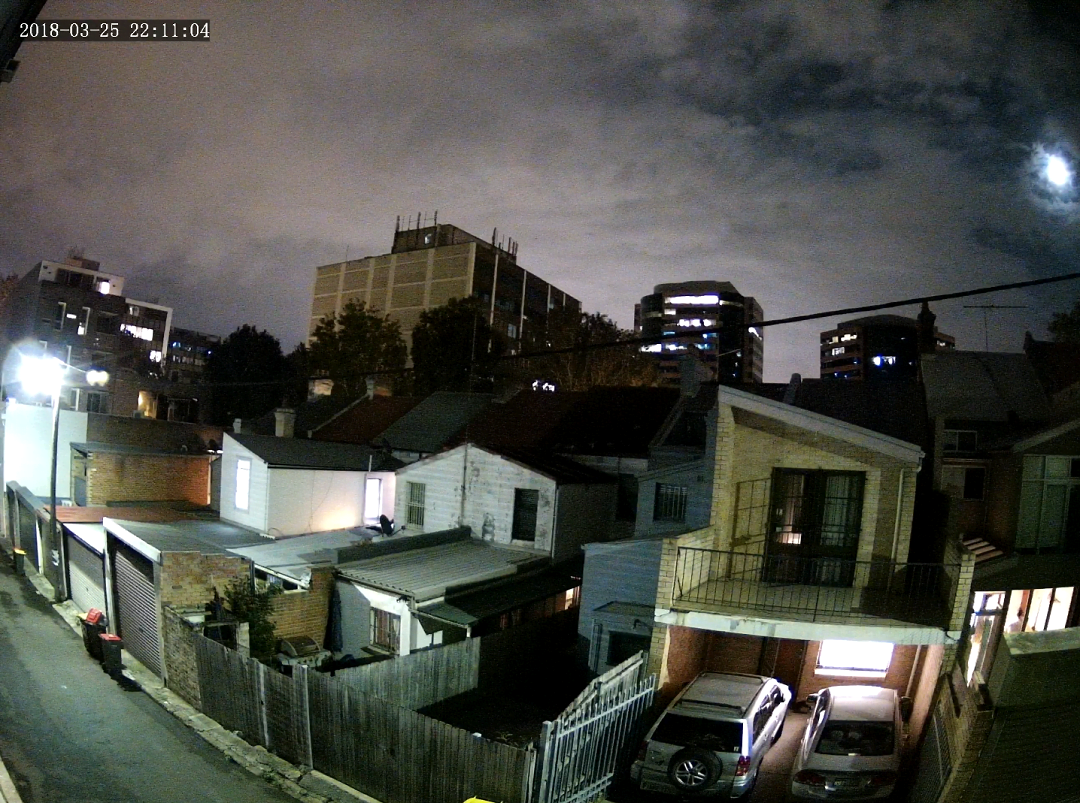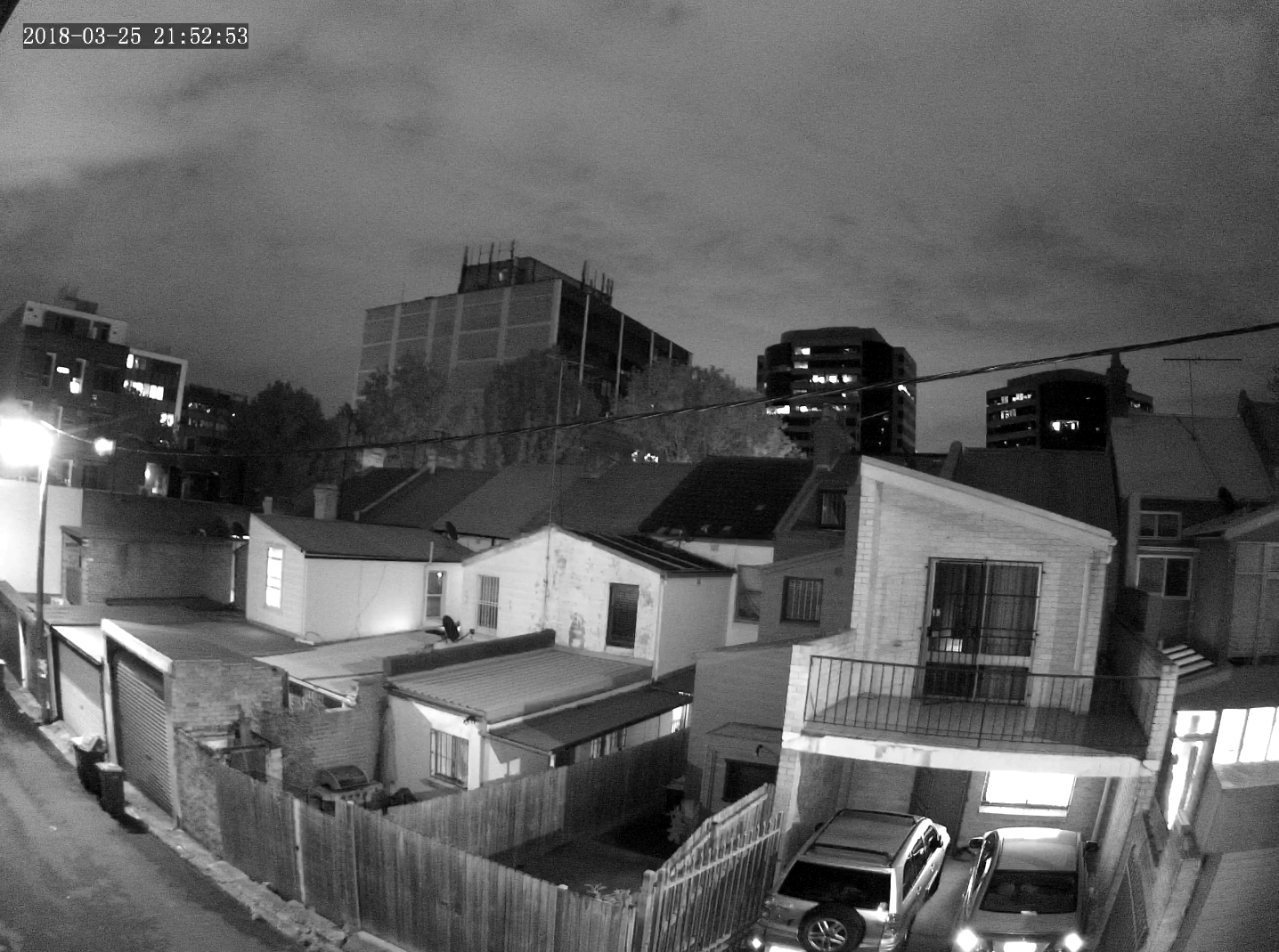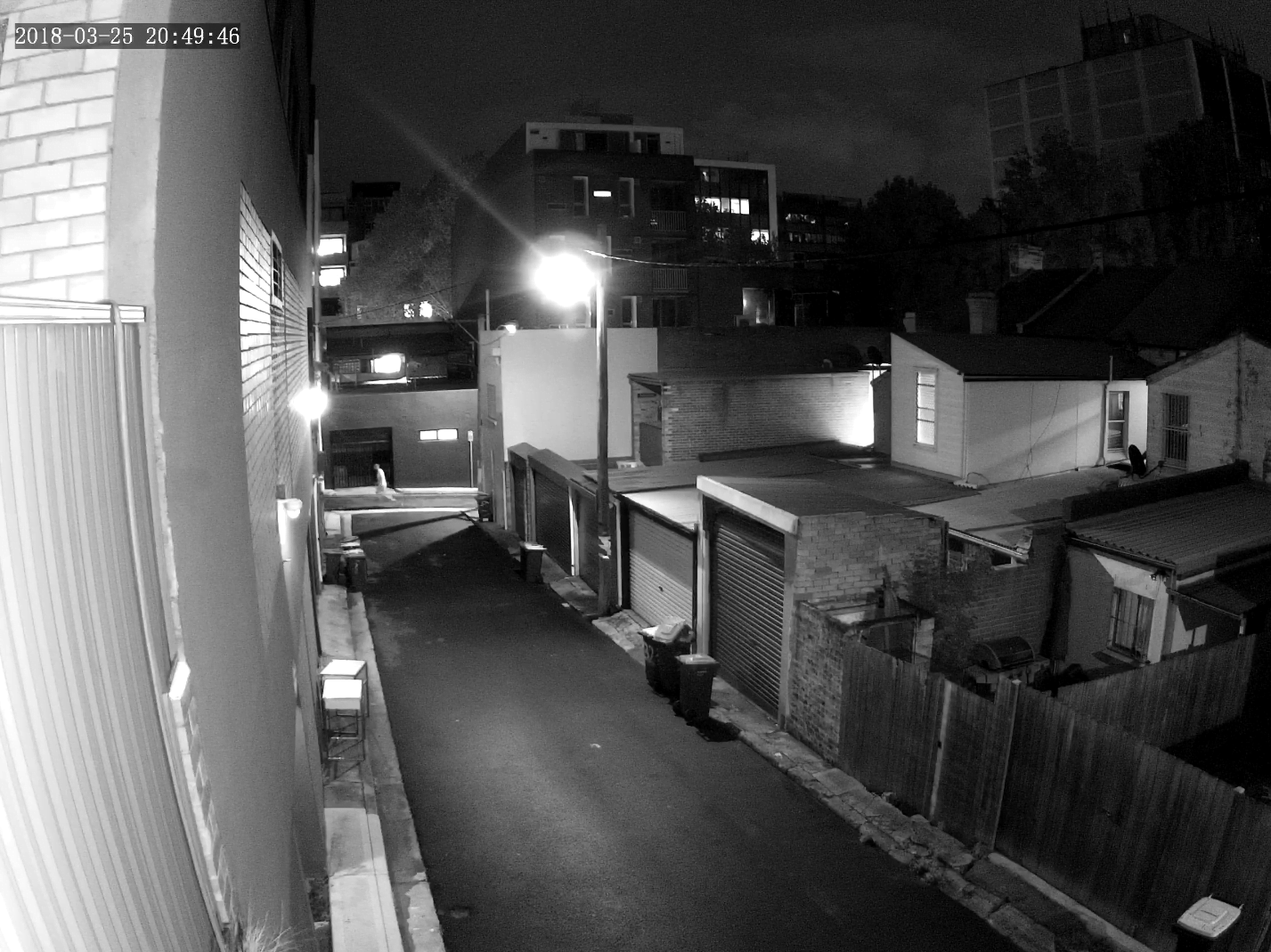Uniview’s IPC2325EBR5-DUPZ is a PoE 5MP Starlight day/night bullet camera, built to an IP-67 rating and featuring elevated light sensitivity, a motorised lens and autofocus, 120dB of WDR, 50m smart IR, Ultra H.265 compression and plenty more, all buttoned up in a robust and compact cast alloy form factor.
Contents
Uniview Starlight Bullet Overview
UNIVIEW’S new IPC2325EBR5-DUPZ 5MP Uniview Starlight bullet camera makes an impression the instant you get it into your hand. It’s at once compact and robust – weight is less than 600g – yet packs considerable punch optically, thanks to a fast F1.2 aperture 2.7-13.5mm motorized zoom lens with autofocus. Supporting that excellent lens range is a 1/2.7-inch progressive scan, 5MP, CMOS sensor with minimum scene illumination of 0.001 lux in colour or 0 lux in monochrome with IR on.
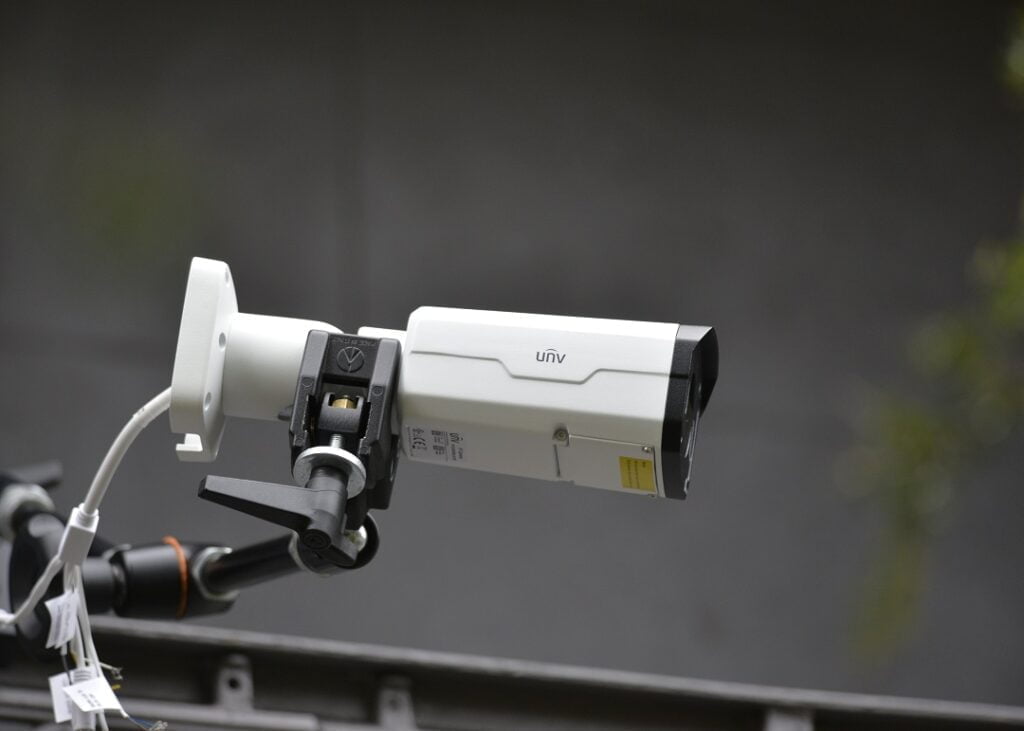
The things that jump out at me when I fire up the Uniview Starlight Bullet are resolution – I’m at 2592 x 1944 pixels and this image is sharp, even at the widest angles of view. There’s latency – maybe 350th of a second, perhaps a touch more. I notice slight stepping and checking the spec find this camera has a maximum frame rate of 20ips. The next thing I look for is bandwidth – it’s running at 5.5-6.5Mbps using H.264, which is solid performance at this resolution.
I can’t help but try H.265 and it’s good in terms of sharpness but I start to lose plates and there’s noise around fast-moving parts of the scene in heavily shaded areas. Bear in mind, the H.264 image stream is very good, so the H.265 stream is by no means poor, it’s just not as sharp as the H.264 and I can’t help but return to H.264. However, for users needing reduced bandwidth, H.265 is there and works well. When I go back through my snapshots later I find the difference between the H.264 and 265 in the Uniview Starlight Bullet is much less significant that I first thought.
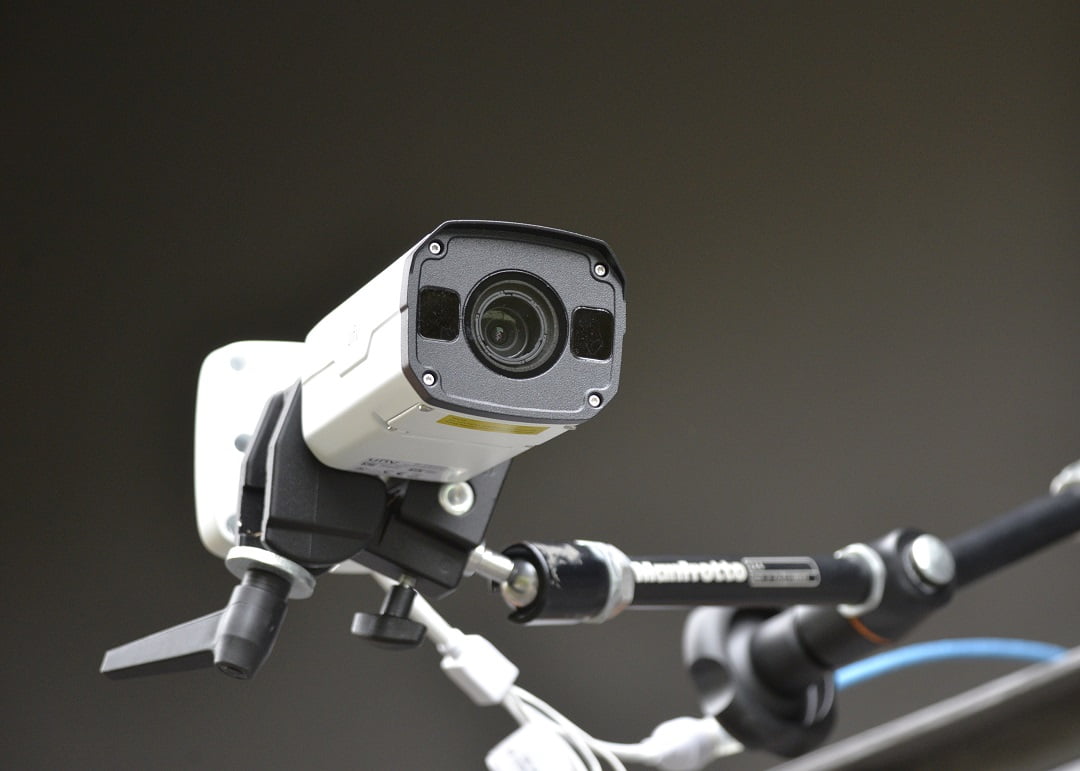
Specifications
Difficult as it always is, let’s stop with the first impressions and take a quick look at the rest of the specifications of the Uniview Starlight Bullet. There’s 2D/3D digital noise reduction, compression options include Ultra 265, H.265, H.264, and MJPEG. There’s an embedded smart algorithm, triple streams, ROI, 9:16 corridor mode and 8 customized OSDs, 8 privacy masks and 8 regions of interest. This camera is ONVIF-compliant and has an angle of view that’s 93.38 degrees at the wide end and 28.56 degrees at the long. The auto/manual shutter can be set from 1 to 1/100000 s, there’s digital de-fog, HLC and back light compensation.
There’s also some IVA, including behaviour detection for parameters like intrusion, cross line and motion detection in 4 areas. There’s exception detection, audio detection, face detection, people counting, as well as defocus and scene change detection and reporting. Additional features include watermark, IP address filtering, tamper alarm, alarm input, alarm output, access policy, ARP protection, RTSP authentication, user authentication, 2-way audio with G.711 compression.
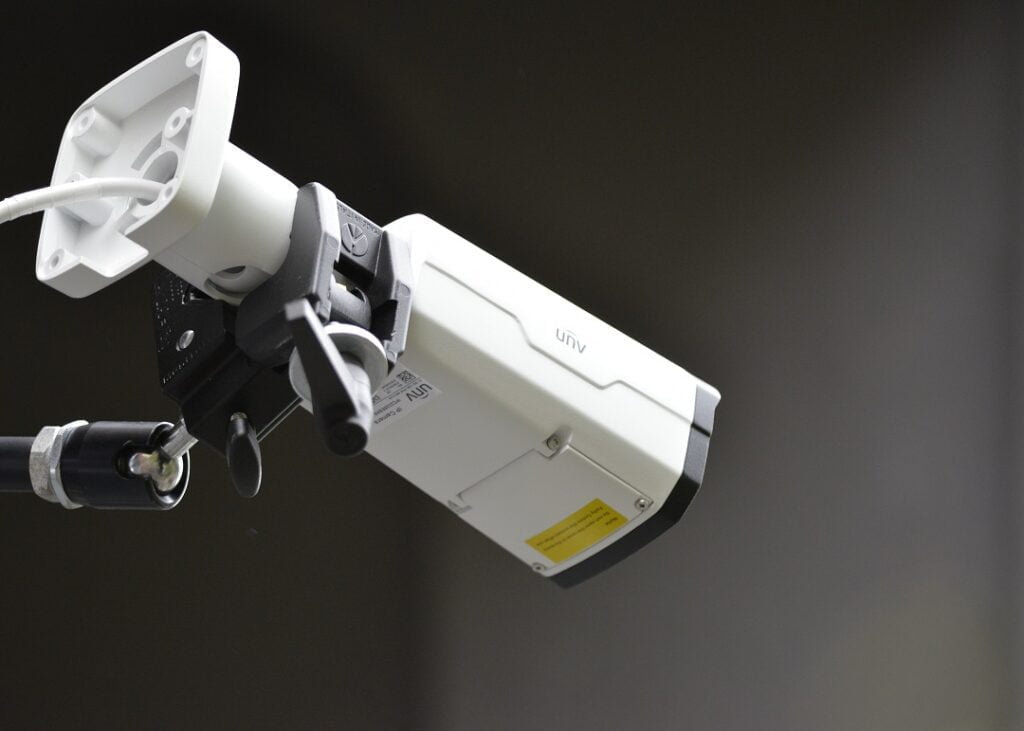
The camera dimensions are 253.4 x 86.4 x 78.7mm, weight is 0.58kg, maximum power draw is 10W, operating temperature range is -35 to 60C. Edge storage is MicroSD 128GB. As usual, we are testing the camera on SEN’s Optiplex 9020 via a NetGear ProSafe GS108P PoE switch. There aren’t any other cameras sharing the network right now.
Test Driving the Uniview Starlight Bullet
This camera impresses out of the box. It’s rock-solid build and surprisingly compact. It’s a cinch to setup – add RJ-45, open the software and there it is. Performance in my variably-lit external scene tends to be a little on the darker side with WDR off but it’s very consistent and there’s no exposure of the bright areas – this street scene is a bit tricky that way. The weather is playing a part, too, it’s a bright grey day, with gloomy periods. Regardless, I soon find that as well as delivering glittering 5MP resolution, the camera is a cracker with plates in good light.
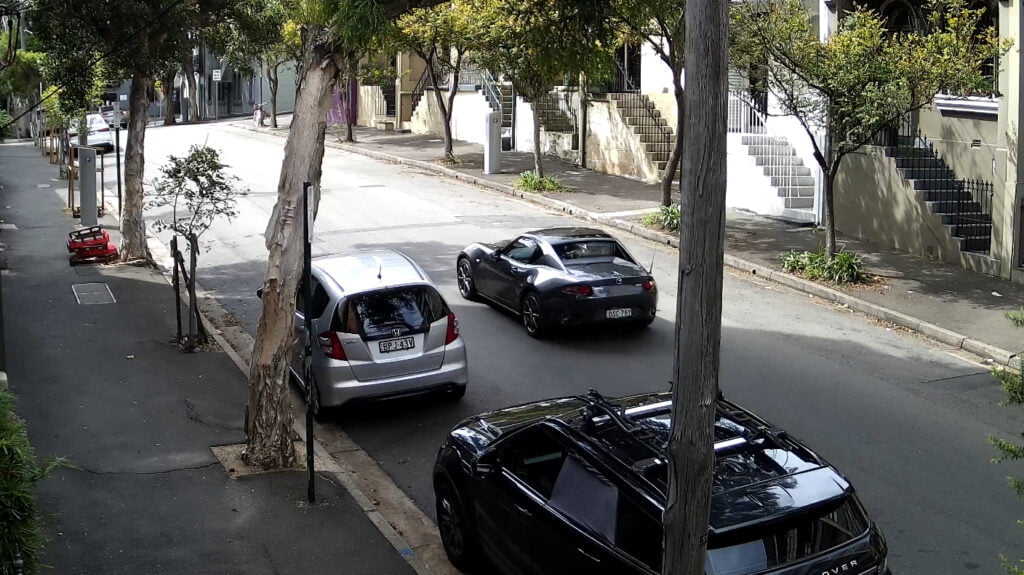
It’s not long before I’ve wound zoom in to around 6mm and that’s where I stay for quite a while – it’s a perfect balance for my front street scene at this sensor size. This lens is well made – there are some longitudinal chromatic aberrations, as well as some barrel distortion – maybe it’s 8 per cent. I don’t see any ghosts in this scene, though later on in the back lane I manage to provoke a single aperture ghost from a streetlight in the frame.
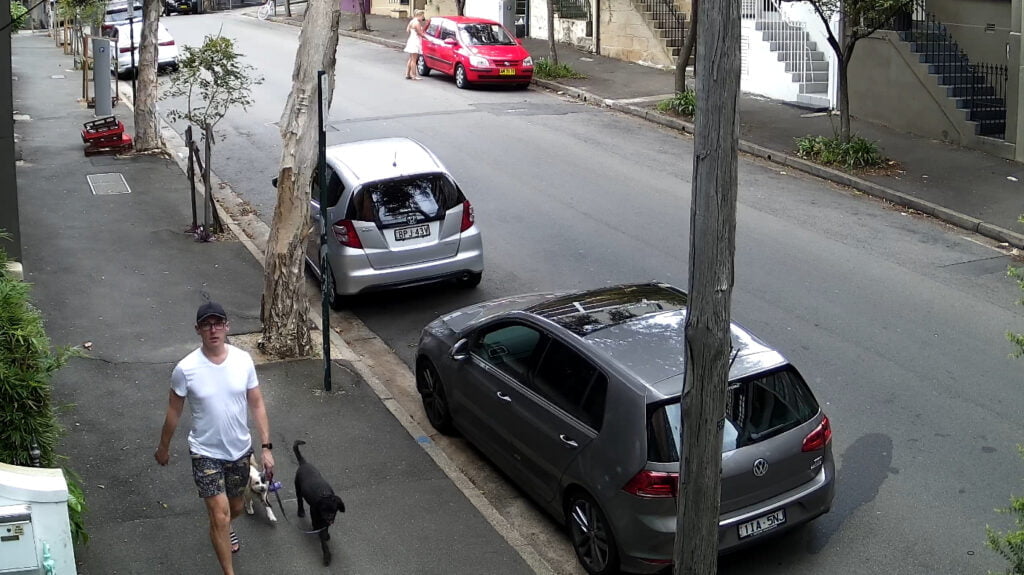
The motorised zoom and autofocus takes me a few goes to get on top of – it has a way of rocking back and forth when I want it to go one way or another – but when I work this out (click and hold), zoom is fast and autofocus is right behind it. Unsurprisingly at this resolution, zoom really rewards, giving extremely high levels of detail. By the time I’m all the way in with the zoom, light levels have begun to drop off and I’m losing the plates I enjoyed earlier in the day – closing aperture is doubtless having an impact here. Between the wide and long ends you can see the loss of an F-stop, maybe two.
One of the nice things about motorised bullets like this is their ability to stay on-point when it comes to framing a scene. As control room operators know, big zooms have a way of getting their drivers lost by whizzing out of intuitive context, sometimes winding up viewing oil spots on the road or bricks in some far-off wall. If the camera is mounted at a slight downward angle, as most bullet cameras are, then the tendency to lose the scene when deep-zooming is exacerbated.
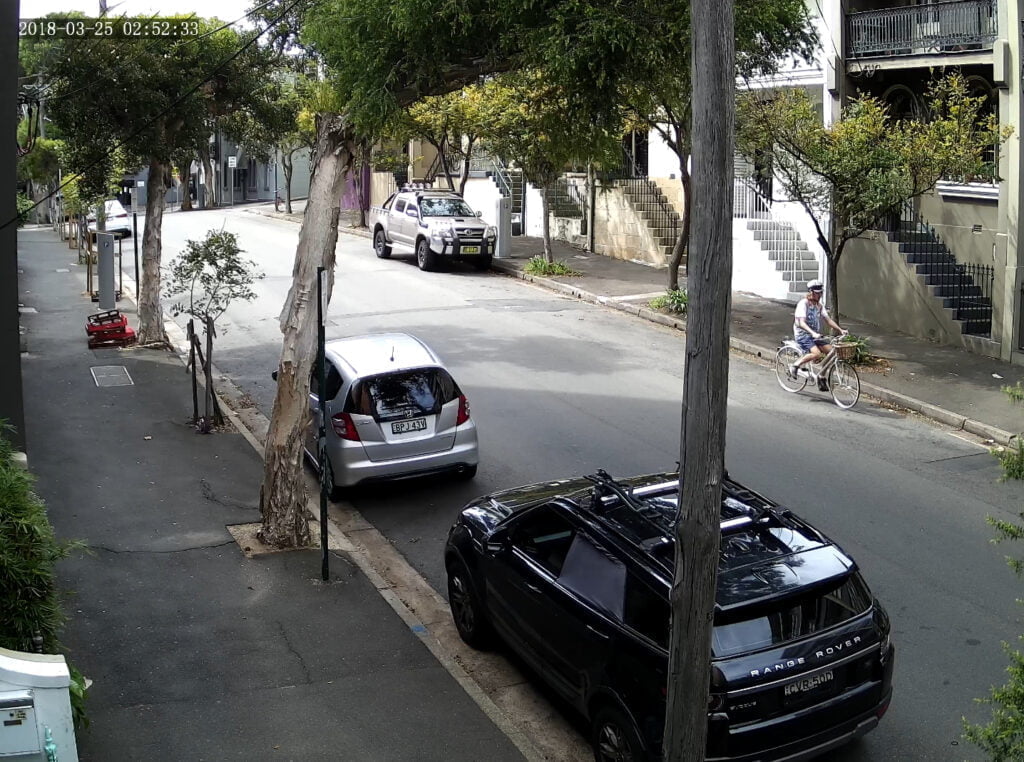
In the mid-afternoon when I get started on my test and it’s relatively gloomy beneath the towers with bright light from about 70m onwards. I try WDR but find colour rendition a bit more saturated than I like – this is typical of Uniview cameras I’ve tested. When I turn WDR off, I’m happy with the image.
It’s consistent across the frame, exposing for the brighter areas so the darker areas are a little darker than they might be, but tones are very natural. Best of all, the high resolution and the slightly longer focal length I’ve settled on are delivering very easy plates and faces in this application. I’m impressed with the depth of field, too. And the frame rate is instructive – I get used to the 20ips – every time I take a snapshot and I can see the trade-off between frame rate and resolution is well worth it.

The afternoon goes along. I take snapshots of cars, motorcycles and groups of people moving around. I like the colour rendition but I’m finding the glary, gloomy overcast day a bit 2-paced in terms of screen brightness. I’m so impressed with the 6Mbps bitrate with this 5MP camera that I try the H.265 compression as well. It certainly saves bandwidth, but it starts to eat into the level of detail that has been giving bullet-proof number plates at 20-plus metres. After a snapping a couple of passing cars I go back to H.264.
At all times I note depth of field is strong – digital zoom of these images is good, too. You’re not zooming in 30x or anything, but you can go 3-4 mouse clicks and get useful information. Faces in good light are a real strength at 5MP. These are the sort of court admissible faces no one will ever have to think twice about. Inside 10m at a focal length of 6mm you get the colour of dog collars, the brand of watch, the fine patterns in clothing. This is very good work – investigators will love it.
Low Light and IR
At 5.30pm, I’m starting to lose the license plates of speeding motors scooters – these are small plates moving at 40-plus kmph – but the rule seems only to apply to plates in the areas of heaviest shade. In sunlight at greater distances, I still have discernible plates moments later. At a quarter to 6, plates are gone, and I’ve given up hoping for them. Then something interesting happens. I decide to switch WDR back on and bing! Plates! The colour saturation is there, too, but it gives me extra detail I didn’t have scene-wide and for plates it’s worth it.
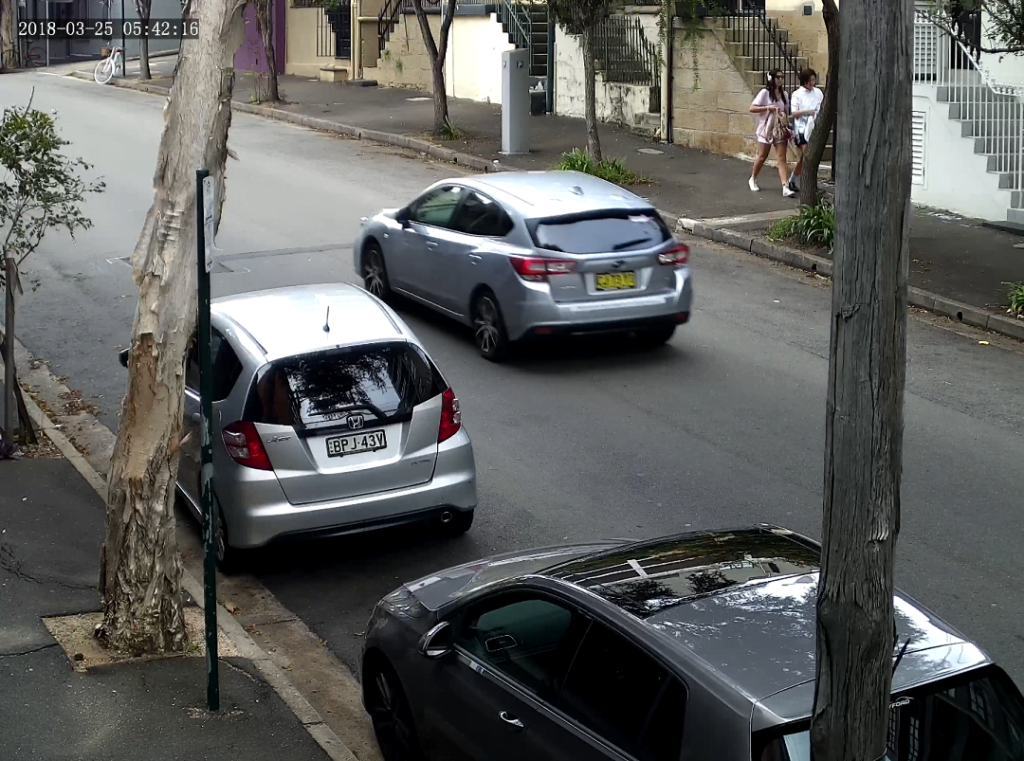
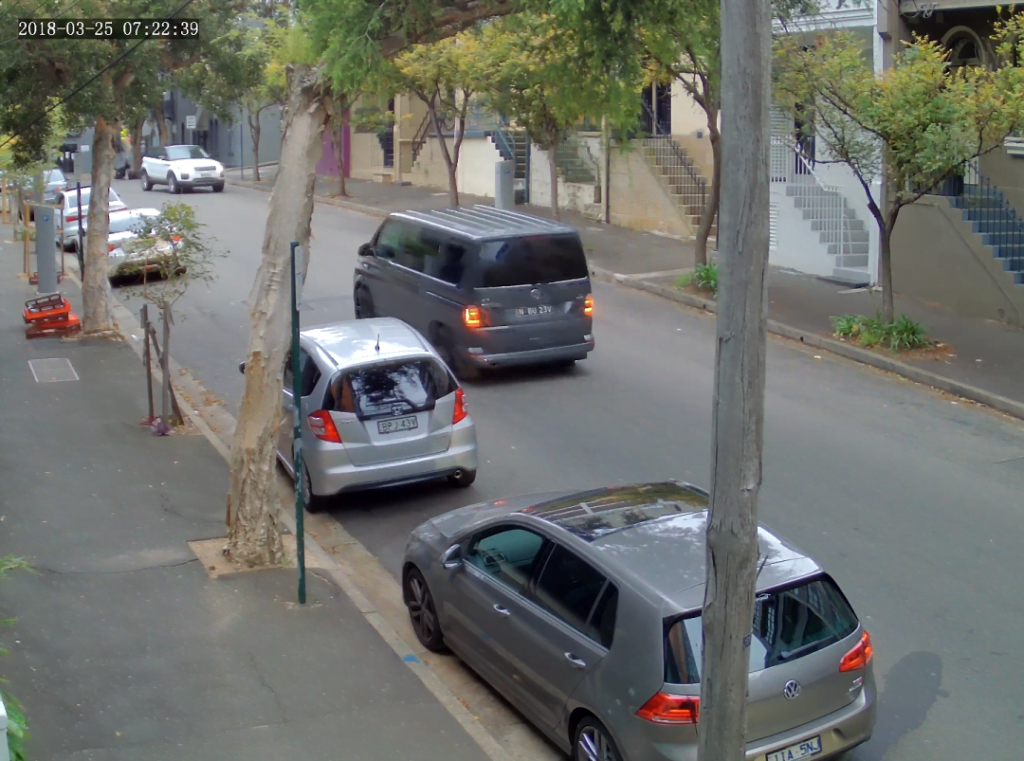
From here, light fades, noise intrudes, I get some tailing behind vehicles. At 7.41pm, the camera goes into night mode. After it does so, I turn WDR back off to see if that makes a difference and we are back into sharp colour again. The camera holds colour until about 8.30pm and then goes back into night mode – I could lock it in colour but am interested to see how the camera performs in monochrome in the presence of IR.
The shutter speed has dropped off and there’s some blooming from tail lights, headlights and bright reflections. I notice in night mode with IR activated that frame rate drops to 12ips. There’s also motion blur of vehicles but it’s much less pronounced with pedestrians. I’m still getting instances of face recognition up to 10m in sub 4 lux with IR activated.
Next comes the lane test. It’s darker out here, which gives us a chance to look at IR performance. In wide angle, a pedestrian walks up the lane. He’s too far away to make out specifics (70m) but I can see he’s bald, wearing light colour shirt and shorts, carrying a bag.
A motor scooter goes down the lane and hits the brakes, confirming my observations about blooming in low light. The camera takes remedial action in the face of the bright tail lights, darkening the scene noticeably to manage it, then brightening as the scooter departs the scene.
Next comes a pedestrian wearing fatigue trousers, a hat, boots. Blur levels of objects moving at walking speed are low in monochrome with IR activated. I pay attention to noise – it’s fine-grained and very consistent across the frame. I head out the back and point the camera at the darkest part of the scene, the rooftops a block down and the trees behind. This is a dark hole in the scene with few discernible details.
I find as I start to zoom in on this dark space with IR now turned off, the Uniview Starlight bullet can’t attain focus and oscillates back and forth before parking its lens elements and leaving me ablur. I find the way around this is to reactivate the IR array – with some light on the scene the camera quickly attains focus and I can then turn the IR off again to check unassisted night mode. While I’m mucking around with this I also try going back into day mode at a wider angle of view and find colour performance is solid, too.
A few days later, I spend some time playing around with the Uniview Starlight Bullet in full daylight and again, performance is impressive – particularly colour rendition, which is rich – the blues and reds in particular – it’s so solid it makes me think of polarising filters. This performance is likely to relate to lens coatings, given when the image stream is pushed by WDR (see the third image down) it tends to warmth.
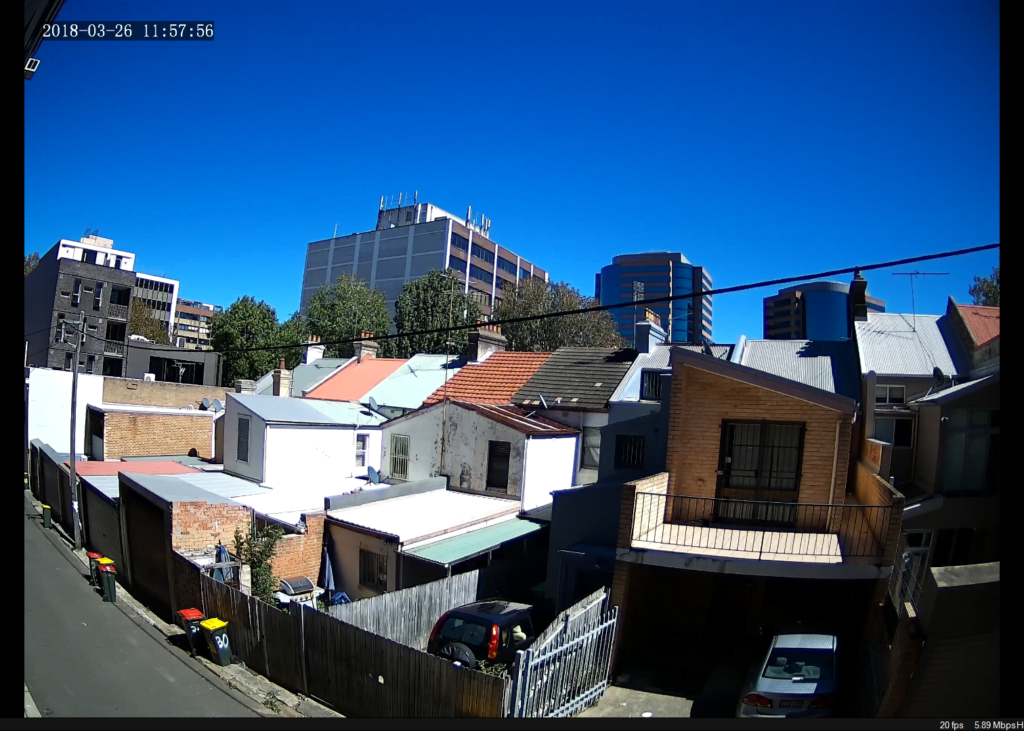
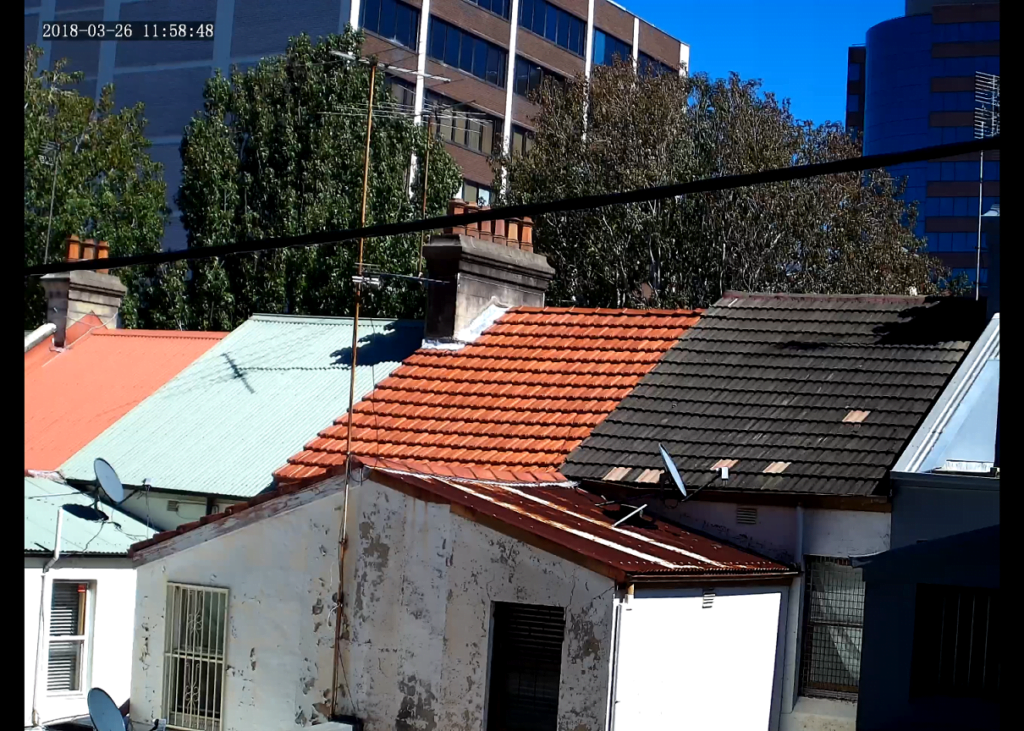
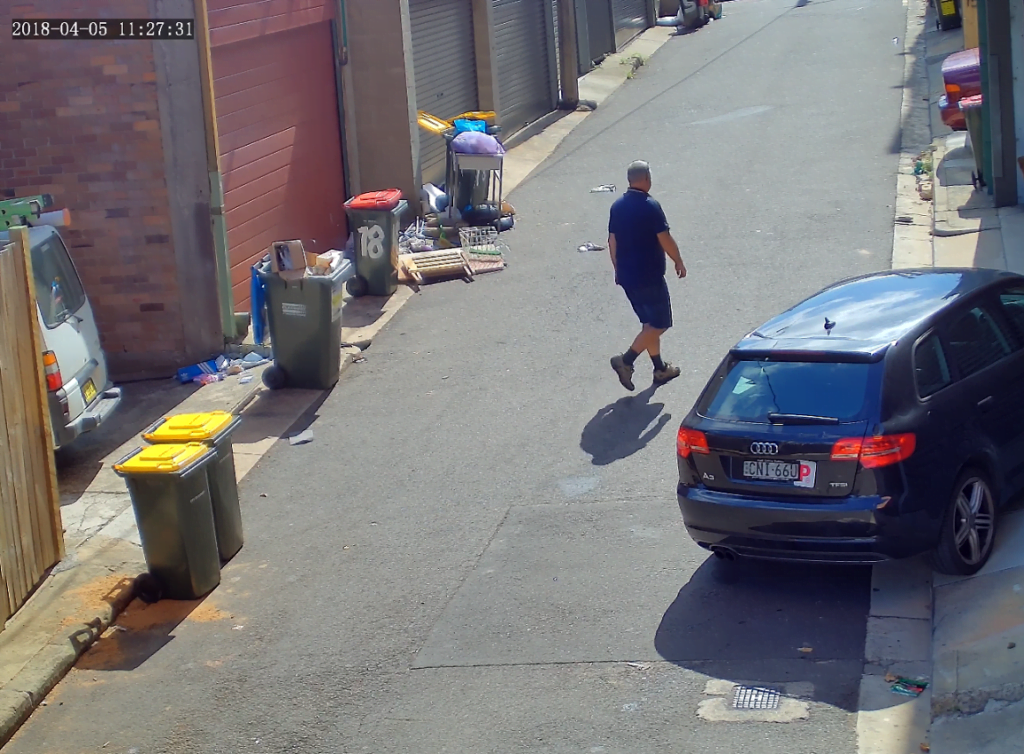
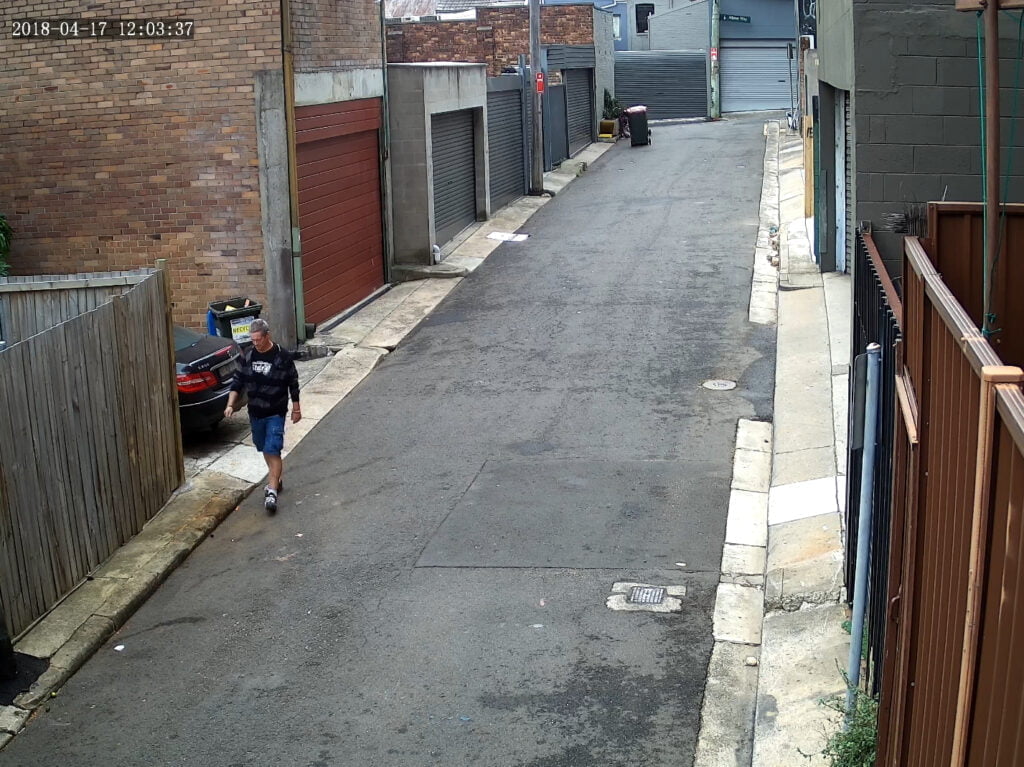
Conclusion
The new Uniview Starlight Bullet is a capable camera built to an exceedingly robust IP67 specification, it’s light and compact, considering its specification. A strength of the camera is its wide motorised focal length supported by autofocus, which makes adjusting to changing requirements in real time very easy indeed. The camera’s ability to snare very fast-moving plates on the street is excellent.
Management of WDR is nicely handled and low light is another strength. With sub 2 lux at the lens, the camera offers colour, unassisted monochrome and IR monochrome in night mode – which of these you select is up to you – all offer solid situational awareness with low blur of pedestrian movements. I found the camera’s performance in colour at night out the front to be very solid, with great colour rendition, depth of field and good handling of sodium streetlights.
The high resolution is a wonderful thing – in higher light levels it gives no-quibble face recognition out towards 20m. At around 10m, face recognition is superb – as tack sharp as a CCTV camera ever could be – and this resolution combines with the quality optic to offer strong depths of field you would not expect of a camera this size. After spending 24 hours with it I’m still not convinced I’ve uncovered the best. Uniview Starlight Bullet is the sort of camera that rewards thoughtful operator settings in challenging conditions.
Fact File
Features of the Uniview Starlight Bullet 5MP Starlight Bullet include:
- 5MP 2592 x 1944 pixel resolution
- 0.001 lux in colour & 0 lux with 50m IR
- 120dB of IR, Ultra H.265 Compression
- Motorised F1.2 aperture 2.7-13.5mm lens
- 2D/3D Digital Noise Reduction
- IVA, including exception, Audio & Face Detection
- Compact 253.4 x 86.4 x 78.7mm, weight 0.58kg
- De-fog, HLC, BLC
- 2-Way Audio, IP67 Rating
Additional Specifications
Optics
- LightHunter
- Day/night functionality
- Smart IR, up to 50m (164ft) IR distance
- Up to 120 dB Optical WDR (Wide Dynamic Range)
- 2D/3D DNR (Digital Noise Reduction)
Compression
- Ultra 265, H.265, H.264, MJPEG
- Embedded smart algorithm
- Triple streams
- ROI (Region of Interest)
- 9:16 corridor mode
- Customized OSD
Network
- ONVIF Conformance
Structure
- Support PoE (Power over Ethernet) power supply
- Wide temperature range: -35°C to 60°C (-31°F to 140°F)
- Wide voltage range of ±25%
- IP67
- 3-Axis
What is Wide Dynamic Range (WDR)?

WDR (Wide Dynamic Range) is a term used to denote images with high dynamic range in video surveillance cameras. WDR enhances image quality under the high contrast illumination conditions, allowing to register details in the dark and light parts of the scope.



